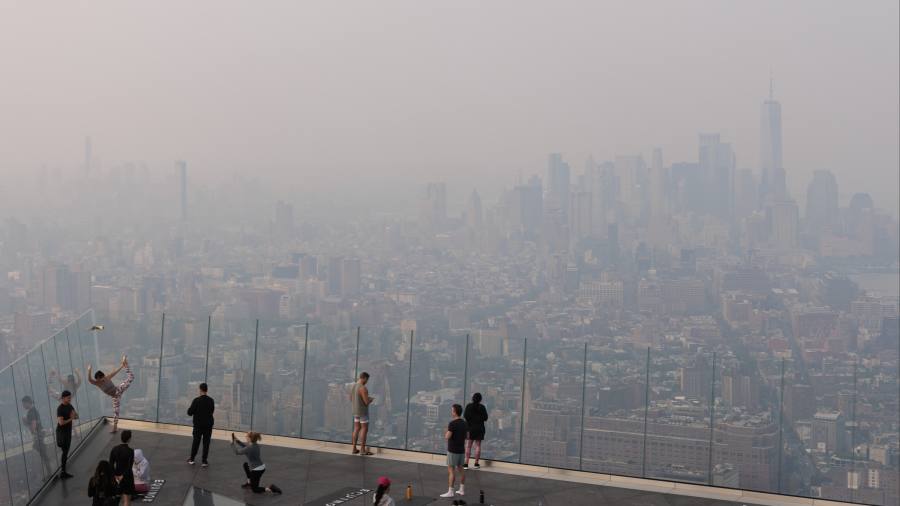Millions of people in the eastern US and Canada faced health warnings from environmental regulators as thick smoke from northern forest fires spread through cities from Ottawa to New York.
Canada has been battling an active wildfire season with blazes in most of its 10 provinces and its territories for most of the past month. Smoke from the fires has swept south across some of the most populous cities in North America this week.
New York City’s air quality ranked as the second-worst of any major urban area in the world on Wednesday, according to the IQAir World Quality Index, behind only New Delhi in India.
New York residents again donned face masks they had recently ditched as the Covid-19 emergency had subsided. Schools cancelled outdoor activities and the city urged vulnerable New Yorkers to remain inside and keep windows closed as the air quality reached its lowest levels since the 1960s.
“Yesterday, New Yorkers saw and smelled something that has never impacted us on this scale before,” Eric Adams, New York City’s mayor, said on Wednesday morning, noting that the event had sent “shockwaves through the entire city”.
After easing on Wednesday morning, New York officials predicted conditions would again worsen in the afternoon and through the evening, and called it a “multi-day event”.
Washington’s public schools also suspended outdoor activities for pupils as the city’s environmental regulator issued a “code red” air-quality alert for the District of Columbia.
The Canadian environmental regulator categorised air quality in Ottawa, the country’s capital, as reaching the highest level of health risk. Large swaths of Quebec and Ontario were subject to an air-quality alert from Canadian authorities.
Earlier this spring, fires in Canada’s main oil-producing province of Alberta forced tens of thousands of people to evacuate their homes, and caused more than a dozen oil and gas companies to temporarily shut or curtail operations.
More blazes have now taken hold in the forests of eastern provinces such as Quebec and Nova Scotia. More than 400 fires were active across Canada as of Wednesday, with about 4mn hectares burnt so far this year, according to the Canadian Interagency Forest Fire Centre.
Scientists have observed fires in the boreal forests of the northern hemisphere increasing in intensity over the past decade with average temperatures across the north of the planet rising faster than closer to the equator as a result of global warming, as the reflective snow and ice of the Arctic has melted away.
Wildfires north of the equator are generally becoming more frequent and intense as the planet warms and summers get hotter. May 2023 ranked globally as the second-warmest May on record, according to the Copernicus EU observation service.
Heat records have been broken in parts of Asia, in particular in China and Vietnam, where the unusually warm weather began months ahead of the usual July and August summer. Parts of Siberia also set all-time records last week.
Sea surface temperatures were the highest on record for the month, and have been at near-record levels since March.
Read the full article here




